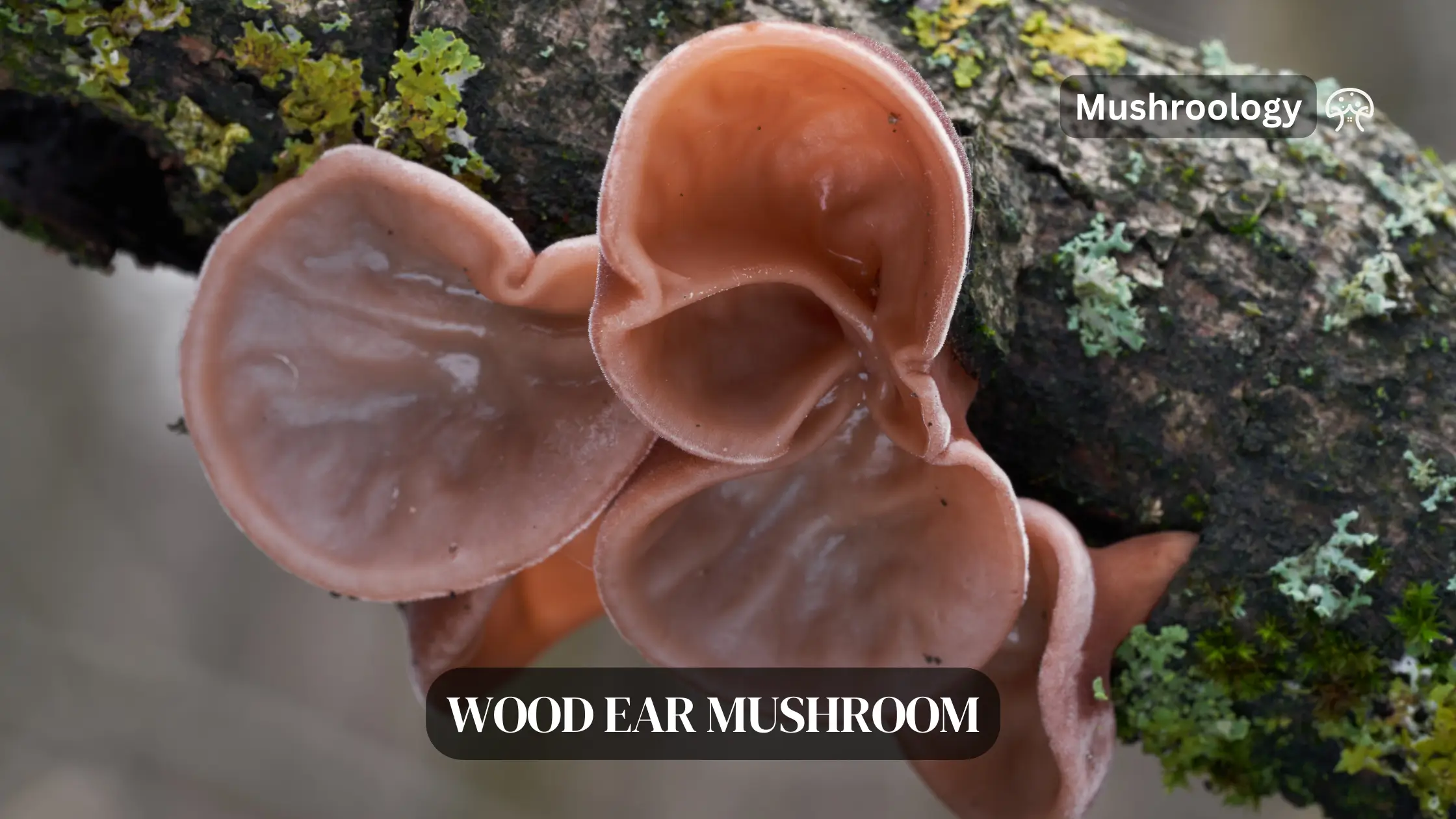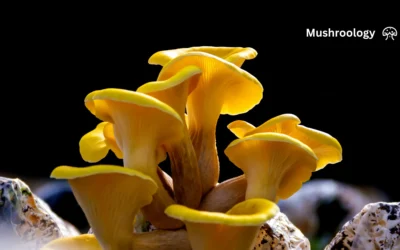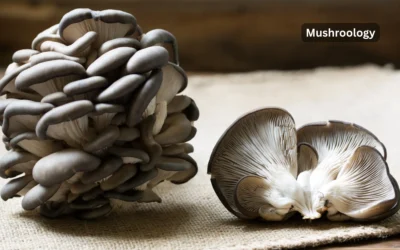Did you know that the global edible mushroom market was valued at approximately $42 billion in recent years and continues to grow? Among these, the humble wood ear mushroom is a rising star, frequently popping up in gourmet dishes and health supplements.
What is Wood Ear mushroom?
As someone who frequently experiments with the diverse ingredients of Asian cuisine, I’ve come to appreciate the Auricularia spp., more commonly known as wood ear mushroom. Their presence in a dish is not about adding flavour, but their engaging mushroom texture imparts a pleasant chewiness reminiscent of mochi or gummy candies.
Wood Ear mushrooms are those cool, rubbery fungi you might’ve seen in Chinese hot and sour soup. They look like little brown ears (hence the name!) and grow on dead or rotting wood, especially elder trees. These mushrooms aren’t big on flavor—they’re kinda earthy—but they’re loved for their crunchy, chewy texture that soaks up sauces like a sponge.
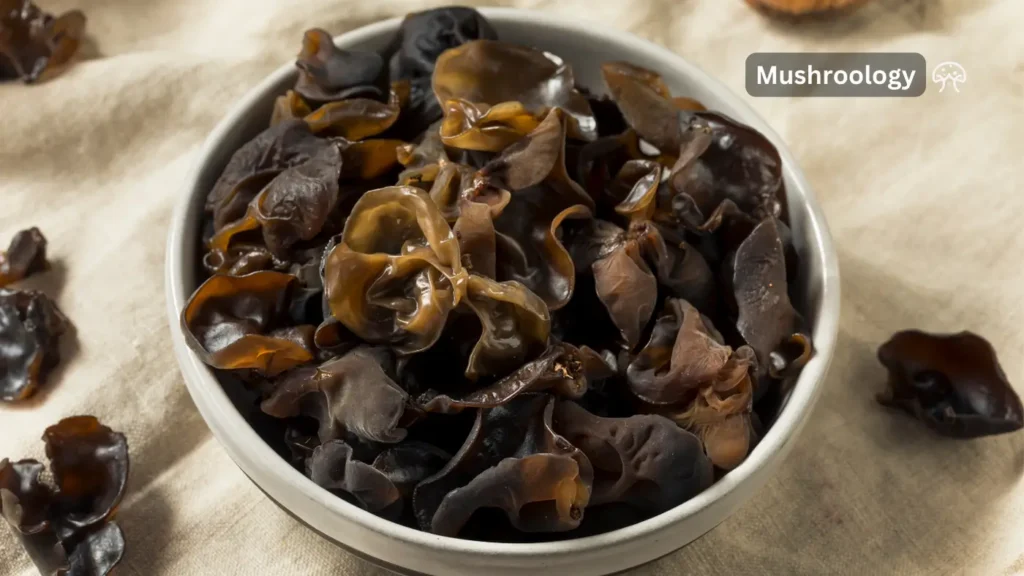
You can find them wild in forests or buy them dried at Asian markets. People in China have used them for centuries, both in cooking and traditional medicine, claiming they help with stuff like blood flow and cholesterol. They’re part of the Auricularia family, with species like Auricularia americana in North America and Auricularia auricula-judae in Europe.
How to identify Wood Ear mushrooms?
Their distinct ear-like shape is easy to spot, typically found in clusters on fallen logs or decomposing branches. This rubbery and gelatinous fungus when moist transforms into a hard texture once dried. Varieties can display colors from pale to dark brown, and upon closer examination, you’ll notice the top surface is either smooth or has a soft fuzziness.
The most defining aspect that aids in identifying wood ear mushrooms—especially useful when foraging—is the wood ear mushroom spore print. Upon creating a spore print, a white pattern will emerge, confirming the mushroom’s identity without a doubt—a crucial step in any mushroom foraging guide.
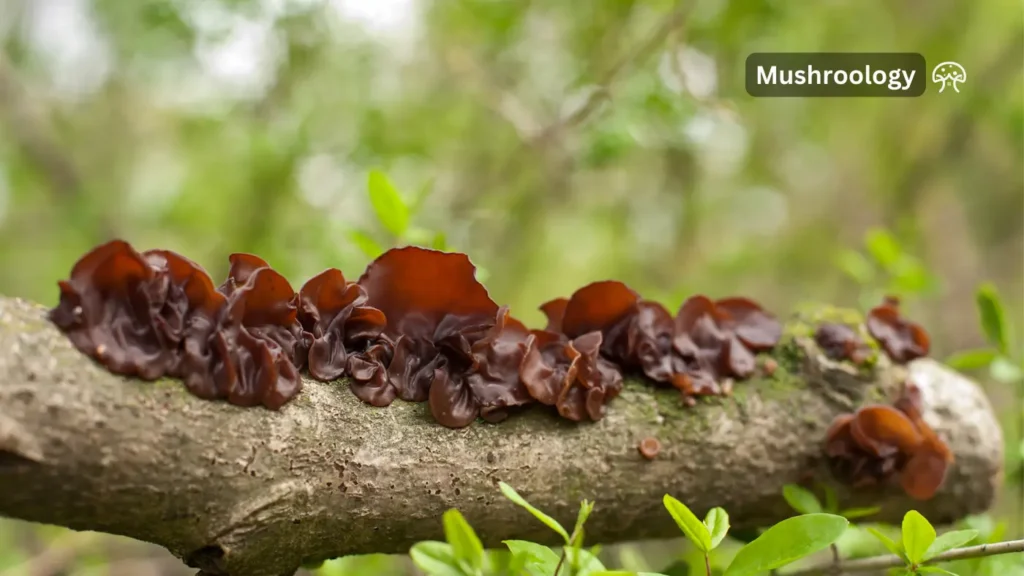
How to distinguish between Wood Ear fungus and other species
Occasionally, confusion may arise when another species resembles the wood ear mushroom. Take the brown witch’s butter, for instance; it’s smaller in size, has a more gelatinous texture than wood ears, and typically grows in clumped formations. Recognizing these differences is instrumental in separating wood ear mushrooms from lookalikes.
Don’t let the learning curve intimidate you if you’re just starting out. With practice and patience, you’ll soon become adept at identifying wood ear mushrooms through their unique spore print and distinctive traits.

How to grow Wood Ear mushroom
Growing wood ear mushrooms outdoors has a certain allure for those interested in sustainable and natural cultivation. Let’s dive into the process, starting with log preparation, a crucial step for a bountiful harvest.
Prepare Logs for Cultivation
When cultivating wood ear mushrooms, my go-to setup involves sourcing hardwood logs. Hardwoods are the preferred base due to their density and durability, providing an ideal environment for the wood ear mushroom spawn to flourish.
Growing Wood Ear mushrooms is pretty cool and doable if you follow some basic steps. Here’s the lowdown:
What You’ll Need
- Hardwood logs (oak, maple, or beech) or a sawdust-based substrate.
- Wood ear spores or spawn (like mushroom “seeds”)
- A drill, wax (cheese or beeswax), and a clean workspace
Step 1: Prep Your Logs or Substrate
- For logs: Use fresh-cut hardwood logs (3–4 feet long, 4–6 inches thick). Soak them in water for 24 hours to boost moisture[
- For sawdust substrate: Mix sawdust with bran, lime, and water. Let it ferment for 3–5 days until it turns brown/black.
Step 2: Inoculate (Add the Spores)
- Drill holes 6 inches apart in the logs. Inject spore solution into each hole
- Seal holes with wax to keep out germs and lock in moisture
- For substrates: Pack the mix into plastic bags, add spores, and seal[
Step 3: Let It Colonize
- Keep logs/substrate in a shady, humid spot (60–75°F, 80–90% humidity). Mist them regularly with water
- This part takes patience—colonization can take 6–12 months for logs, or 4–8 weeks for substrates
Step 4: Fruit & Harvest
- Once you see tiny white bumps or jelly-like growths, mushrooms are forming!
- Harvest when they’re 2–4 inches wide and still soft. Cut them off with a knife
Tips
- Keep it clean: Sterilize tools to avoid mold/bacteria
- Stay shady: Wood ears hate direct sun
- Water often: Dry logs = sad mushrooms. Mist daily if it’s not raining
| Step | Details | Tips |
|---|---|---|
| Selecting Logs | Choose hardwood logs such as oak or maple. Ensure they are fresh and have not begun to decay. | Logs with a diameter of 4-6 inches and a length of 3-4 feet work best. |
| Cleaning | Logs with a diameter of 4-6 inches and 3-4 feet length work best. | A soft brush and plain water are sufficient for cleaning. |
| Moistening | Logs must be soaked in water for 24 hours to ensure they are adequately moist before inoculation. | Use rainwater or non-chlorinated water to maintain natural conditions. |
| Inoculating | Introduce wood ear mushroom spawn to the log by evenly distributing it across the wood’s surface. | Do this in spring or fall when temperatures are mild. |
| Sealing | Cover the spawn with wax to protect it from pests and to retain moisture. | Beeswax is a natural option that works well. |
Challenges in Wood Ear Mushroom Cultivation
| Challenge | Problem | Solution |
|---|---|---|
| Substrate Selection | Choosing an incompatible or low-nutrient substrate can hinder growth. | Opt for high-quality hardwood substrates like oak or maple. |
| Humidity Control | Extremes that are too hot or too cold can stress or kill the fungi. | Use misting systems or humidity tents to retain consistent moisture levels. |
| Temperature Stability | Poor airflow can lead to disease and low-quality yields. | Maintain temperatures within the ideal 60-70°F (15-20°C) range. |
| Lighting Conditions | Mushrooms exploit light differently than plants; too much can be detrimental. | Provide diffuse natural light or shade to protect developing fungi. |
| Air Circulation | Poor airflow can lead to disease and low-quality yields. | Employ fans or natural breezes to ensure gentle movement of air. |
It wasn’t just about battling these challenges but about creating a symphony where each element perfectly played its part. As I adjusted humidity levels and finessed the light exposure, witnessing the mushrooms thrive was my reward. But remember, each mushroom operation is unique, so what works for me may need tweaking for your setup. Ultimately, the joy of overcoming cultivation issues is almost as satisfying as the harvest itself.
How to harvest Wood Ear Mushrooms
Whenever I set out to harvest wood ear mushrooms, I make sure they are nicely saturated. Usually, this is after rainfall, which makes harvesting easier and protects the host tree. I find using a sharp knife to cut the stalk where it attaches to the wood cleanly helps ensure the sustainable growth of future batches. And if I do decide to twist them off by hand gently, I’m always careful not to damage the mushroom’s delicate structure.
How to Store Wood Ear Mushrooms
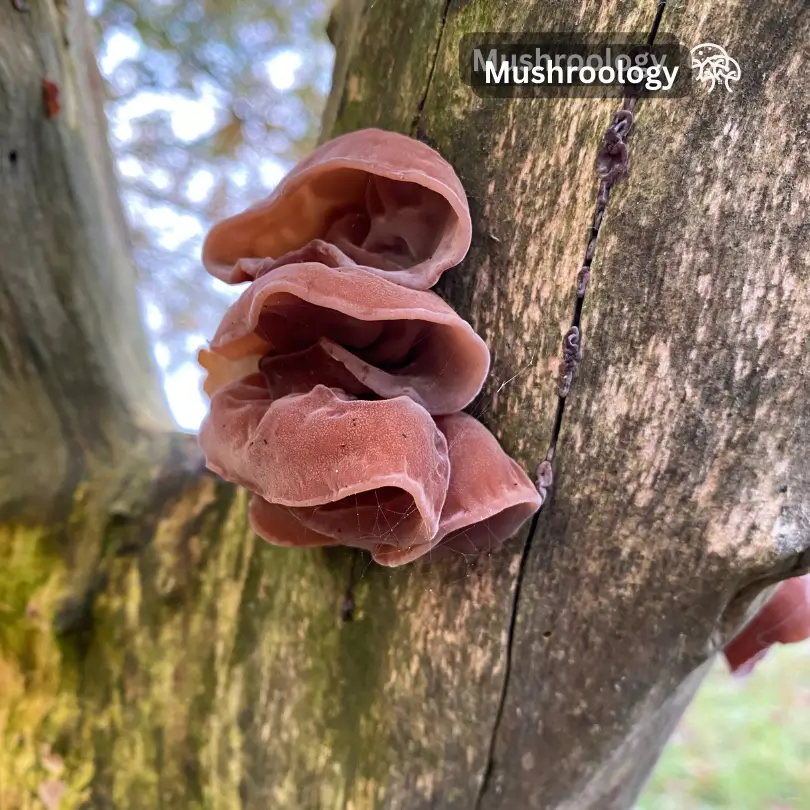
After bringing home my trove of wood ear mushrooms, the next step is ensuring their preservation. I wash them thoroughly first and deal with the question: should I eat them soon or store them for later? Here are the methods I use for storing mushrooms:
Refrigeration: For the mushrooms I plan to use within the week, I place them in the refrigerator in a paper bag. It allows them to ‘breathe’, avoiding moisture accumulation that can lead to spoilage.
Drying: For long-term storage, I dry the mushrooms using a dehydrator until they’re completely moisture-free, then stash them in an airtight container. I’ve found that this method of wood ear mushroom preservation is excellent for maintaining their unique texture and flavor.
| Storage Method | How? | Shelf Life |
|---|---|---|
| Refrigeration | Store in a paper bag within the fridge to keep fresh. | Up to 1 week |
| Drying | Dry thoroughly and seal in an airtight container. | Several months |
With these methods, I can enjoy the unique texture and potential health perks of wood ear mushrooms throughout the year – an indispensable part of my kitchen arsenal.
Incorporating Wood Ear Mushrooms into Diverse Dishes
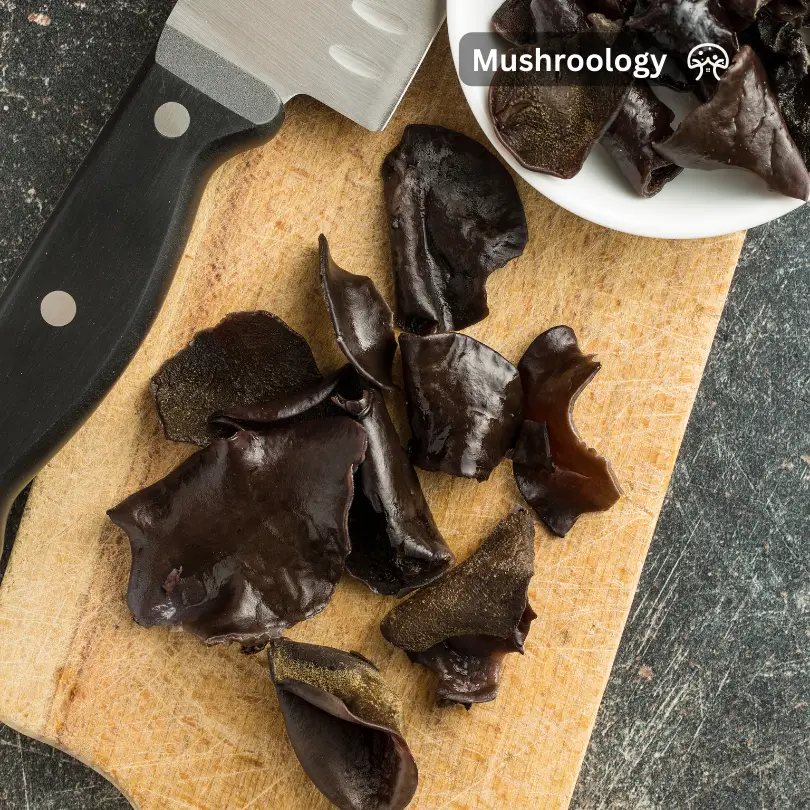
When it comes to the culinary uses of wood ear mushrooms, I see them as culinary chameleons, adept at taking on the flavours of accompanying ingredients. Renowned for their gelatinous and crunchy texture, wood ear mushrooms are a go-to ingredient for adding depth to soups, stirring up savory salads, and elevating stir-fries. These mushrooms must be cooked to actualize their full potential, as their raw form is unsuitable for consumption. Here’s a table showcasing a few ways to integrate wood ear mushrooms into your meals.
| Dish | Preparation Method | Flavor Pairing | Texture Contribution |
|---|---|---|---|
| Hot and Sour Soup | Simmered | Pepper, Vinegar | Silky and Crunchy |
| Stir-Fried Vegetables | Flash Fried | Ginger, Soy Sauce | Chewy and Tender |
| Mixed Green Salad | Rinsed and Tossed | Sesame Oil, Rice Vinegar | Jelly-like and Moist |
Delightful Wood Ear Mushroom Recipes to Try
As a food enthusiast who relishes exploring the versatility of mushrooms in the kitchen, I find that wood ear mushrooms, with their unique texture and ability to soak up flavors, are astonishingly adaptable to various gastronomic creations. I’m eager to share some of my favorite wood ear mushroom recipes that are sure to tantalize your palate and add an exotic touch to your dining experience.
Wood Ear Mushroom and Asparagus Salad with Citrus Miso Dressing
One of my go-to recipes is a vibrant wood ear mushroom and asparagus salad drizzled with a citrus miso dressing. The tangy and umami flavours of the dressing perfectly complement the woodsy notes of the mushrooms. This combination not only pleases the taste buds but also packs a nutritional punch. This salad strikes an excellent balance between the hearty texture of wood ear mushrooms and the crisp, green freshness of asparagus, making it an ideal dish for any season.
Cooking Techniques for Maximum Flavor Absorption
I recommend sautéing them with aromatics such as garlic, ginger, and scallions to harness their flavour-absorbing properties fully. This step is crucial for infusing the mushrooms with intense flavors and aromas, ensuring that every bite of your wood ear mushroom dishes is bursting with culinary delight. Whether you’re tossing them into a stir-fry or simmering them in a savory broth, wood ear mushrooms will elevate your cooking to new heights.
FAQ
What exactly is a Wood Ear Mushroom?
Wood ear mushrooms, scientifically known as Auricularia spp., are edible fungi recognized for their ear-like shape. They are widely utilized in Asian cuisine for their chewy texture, even though they lack a strong flavor.
Where and when is the best time to forage for Wood Ear Mushrooms?
You can forage for wood ear mushrooms in the spring and fall, especially after a good rainfall as they become quite prominent. If you’re in a warmer southern area like Zone 7b, you might find them in winter, but they tend not to appear in the summer months.
How can I tell if I’ve found a Wood Ear Mushroom and not a different species?
Wood ear mushrooms have a distinct ear or jellyfish-like shape, a rubbery texture when wet, and can range in color from pale to dark brown. You can also check the spore print; wood ear mushrooms have a white spore print, which is a reliable identification feature.
What’s the safest way to harvest Wood Ear Mushrooms?
To harvest wood ear mushrooms without damaging the tree or fungus, do so when the mushrooms are saturated. Use a sharp knife to slice them at the base or gently pull them from the wood. Always clean them well to remove any debris before using or storing them.
Can I grow my own Wood Ear Mushrooms at home?
Absolutely! You can cultivate wood ear mushrooms by inoculating soaked logs with the mushroom’s spores. Keep the environment moist and shaded, and with some patience, you should see the mushroom fruit within 8-12 months.
What challenges might I face when cultivating wood ear mushrooms?
You may encounter hurdles, such as selecting the right substrate and maintaining an optimal balance of humidity, light, and temperature. Air circulation and avoiding direct light exposure are key to growing healthy mushrooms.
Are Wood Ear Mushrooms good for my health?
Yes, they are! Wood ear mushrooms are known for various medicinal properties, including boosting the immune system and offering potential anti-cancer benefits. However, remember that they should only be eaten cooked, not raw.
How can I use Wood Ear Mushrooms in cooking for the best flavour?
Since wood ear mushrooms absorb flavours well, cook them with aromatic ingredients to enhance the dish. They add great texture and flavor to a variety of dishes, such as soups, salads, and stir-fries.
Do you have any wood ear mushroom recipes I can try?
Definitely! The wood ear mushroom and asparagus salad with a citrus miso dressing are a tasty option. It’s a refreshing way to enjoy wood ear mushrooms. Cooking them with aromatic ingredients helps them take on the delicious flavors of your dish.

